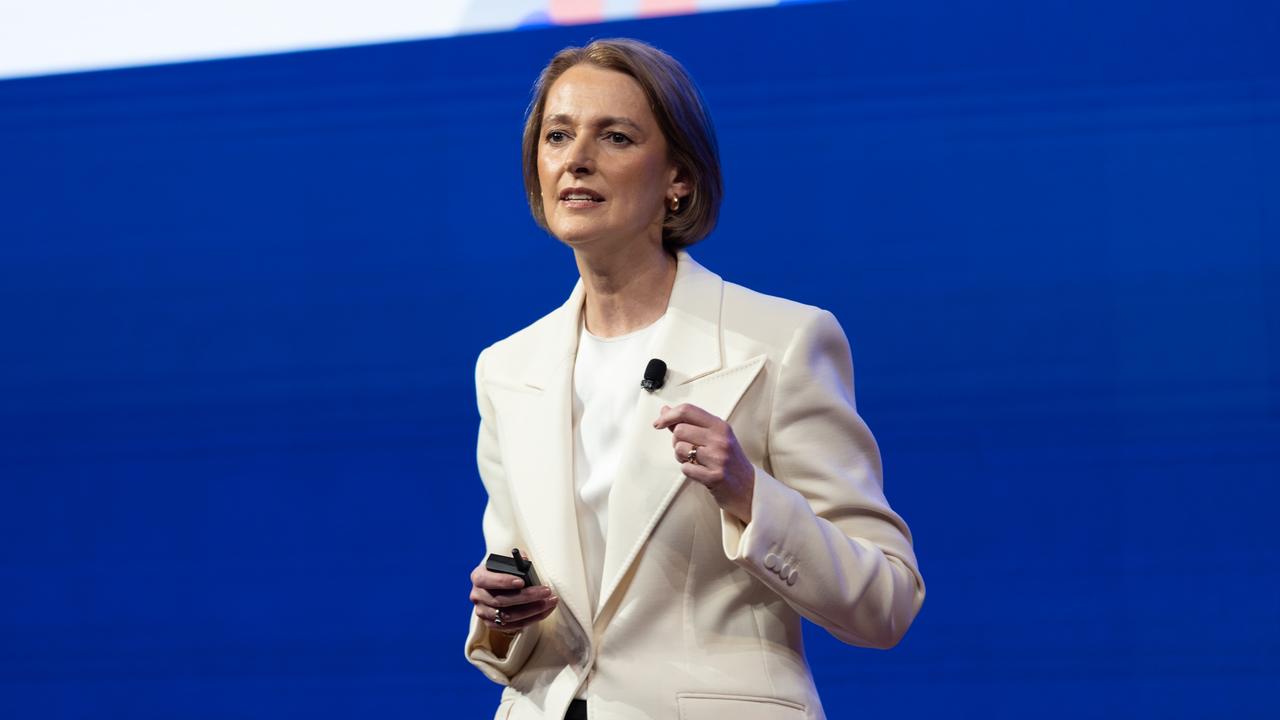
Those two things capture the very different states of play in the two countries. At least, that is, right now.
And why the US Federal Reserve has failed so abysmally, and why its failure – and indeed, even its failure to recognise its failure and so to actively work to correct itself – is as big a threat to our wellbeing as the US’s multiple catastrophic failures in just 12 months under Joe Biden in the geopolitical space.
First, US inflation is more than double ours.
Yes, the US figure is for the year to February, our number is for the year to the December quarter. Despite the best efforts of the Reserve Bank and assorted others to persuade the Bureau of Statistics to switch to monthly numbers, the ABS – very sensibly – stayed with quarters.
And yes, when we get the next inflation number for the March quarter at the end of April, it will show annual (headline consumer) inflation going straight through 4 per cent. Petrol prices are enough to achieve that.
But it will still be only about half the US number for its year to March.
Second, the accelerating US inflation of 2022 (and 2021) had to leapfrog all the decades and all the events along the way, go all the way back to the 1970s and the pre-Volcker years, to find inflation as high.
Actually, true, higher, back then; considerably higher; into the double-digits higher, back then. At least that is, so far.
Volcker – Paul Volcker, then head of the Fed and a very different servant of the public interest to the current miserable Fed incumbent – was the man who crushed what seemed endemic inflation; not only in the US, but in doing so in the US, across most of the entire world as well.
In contrast, in our case, we only have to go back to the years after the global financial crisis – when China was pumping extraordinary amounts of money into its economy and into ours – to find inflation as high as it is now.
But in both, then (2011) and now, it was inflation only just above the top of the RBA’s inflation target range. And back then, it was short-lived.
The 4 per cent-plus higher inflation we will see for the year to the March quarter will still be shy of the level of inflation reached briefly before the GFC, or the GST-prompted and, again, brief 6 per cent (headline) inflation in 2000-01.
It will also still be well shy of the (very) high single-digit inflation of the late-1980s, which indirectly – via the “recession we had to have” – gave us the RBA, its inflation target and its low-inflation success of the last quarter-century.
God, politics, prime ministers and treasurers (all) work is mysterious ways. The events in and out of Canberra and at the top end of Martin Place in Sydney, at the end of the 1980s and into the early 1990s, translated Bernie Fraser from the Treasury building in Parkes to the RBA in Martin Place, and the rest would be that brief history I detailed in the preceding paragraph.
A subject, perhaps – or not – for another day.
So, in terms of passing judgment on the relative performances of the Fed and the RBA – and even more importantly, in assessing now what they should do and more simply, will do; and so, what are the likely consequences both of what they actually do and what they fail to do – these numbers critically set the analytical foundation.
They also tell us pretty starkly that it is on the other side of the Pacific that we – yes, we, both as, we Australians, but also as in we, the world – have a problem; not really on this side. Yet.
Yes, as I have written, I believe the RBA should have moved its official interest rate to 0.25 per cent at the meeting a week ago, after those December inflation numbers.
To stress, not on the basis that inflation was threatening – look at the comparative numbers, it clearly wasn’t; and certainly not as the ‘first step’ to an immediate hiking cycle.
It should have done so primarily to move away from the Covid-emergency 0.1 per cent that was no longer valid now that there was no Covid emergency.
But also to both start the necessary – absolutely vital – journey to at least halfway rate “normalisation”; and proactively, pre-emptively, recognising that in the coming months it is going to be too-high and not too-low inflation that threatens.
I also fully recognise that it would have required a very different messaging precede from the RBA and governor Philip Lowe; after all, we are only a few months out from “not before ’24”.
But the critical core point is that our inflation bird has not yet flown. True, ominously, it is flapping its wings; with a “wind beneath those wings” suddenly blowing out of the Russian steppes.
That’s the trouble with “events”, dear boy. They can come out of a clear blue sky; or, as in this case, a multi-darkening one. It is a very different matter “on the other side”.
The Fed should be hiking and hiking aggressively – even into the recessionary impacts of surging energy and commodity prices; precisely because it failed to start hiking last year, because it is so disgracefully hostage to Wall St.
There are therefore two futures. It does hike, semi-aggressively and splutteringly. We get a messy mix of volatile, heading downward, markets (shares fall, bond yields go up).
It continues to prevaricate. We get just 25 points this coming week; mutterings of more, but believe it only when you see it.
That way gets you only to the late-1970s; and inevitably a catastrophically bigger bust.




Annual consumer inflation in the US has leapt to 7.9 per cent, the highest it’s been in 40 years. Annual consumer inflation in Australia last printed at 3.5 per cent, the highest it’s been in 10 years.